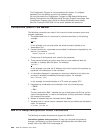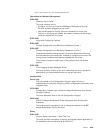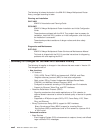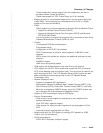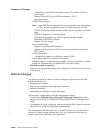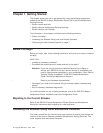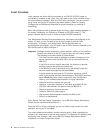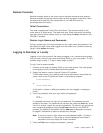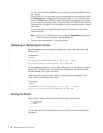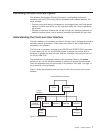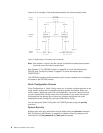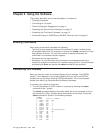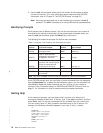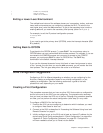Local Consoles
Local consoles are either directly connected by an EIA 232 (RS-232) cable, or
connected via modems to the router. You may need to use a local console during
the initial software installation. After the initial setup connection, you can connect
using Telnet, as long as IP forwarding has been enabled. (Refer to
Protocol
Configuration and Monitoring Reference
for more information on enabling IP
forwarding.)
When the configured router is started for the first time, a boot message appears on
the screen, followed by the OPerator's CONsole or OPCON prompt (*). The *
prompt indicates that the router is ready to accept OPCON commands.
Your Multiprotocol Routing Services software may have been pre-configured at the
factory. If it was, you do not need to use a local console to perform initial
configuration. If, however, your Multiprotocol Routing Services was not
pre-configured at the factory, you will need to use an ASCII terminal attached to the
2210 service port to initially configure it.
Important: Garbage, random characters, reverse question marks, or the inability to
connect your terminal to the 2210 service port can have many causes.
The following list contains some of those causes:
v The most common cause of garbage or random characters on the
service console is that the baud rate is not synchronized with the
IBM 2210.
If the 2210 is set to a specific baud rate, the terminal or terminal
emulator must be set to the same baud rate.
If the IBM 2210 is set to autobaud (this is the default), press the
terminal break key sequence and press Enter.
A typical break key sequence for PC terminal emulators is Alt-B
(refer to the terminal emulator documentation). Most ASCII terminals
have a Break key (often used in conjunction with the Ctrl key).
Refer to your hardware documentation for more information.
v Defective terminal or device (ac) grounds.
v Defective, incorrectly shielded, or incorrectly grounded EIA 232
(RS-232) cable between the terminal and the IBM 2210.
v Defective terminal or terminal emulator.
v Defective IBM 2210 system board.
v High ambient electromagnetic interference (EMI) levels.
v Power line disturbances.
(See “Service Terminal Display Unreadable” in the
IBM 2210 Nways Multiprotocol
Router Service and Maintenance Manual
.)
Once the 2210 is initially configured, you will not need a local console for router
operation, as long as IP is enabled.
The router software automatically handles console activity. When upgrading the
software, you might have to use the local console. For information on attaching and
configuring local consoles, refer to the
IBM 2210 Nways Multiprotocol Router
Installation and Initial Configuration Guide
.
4 MRS V3.2 Software User’s Guide



